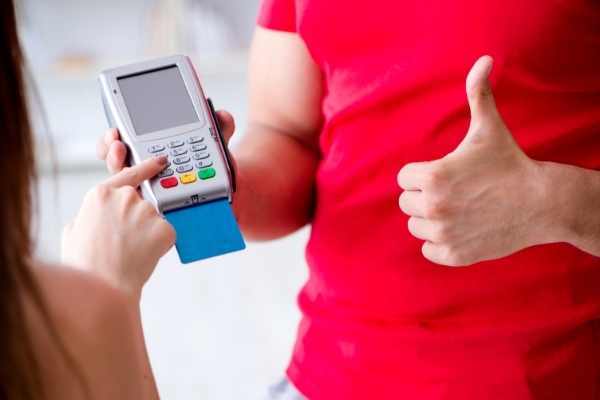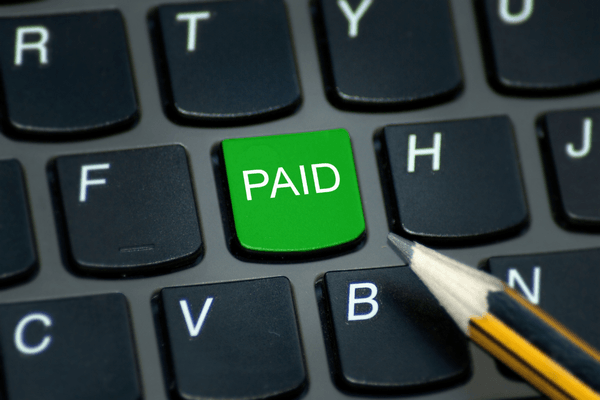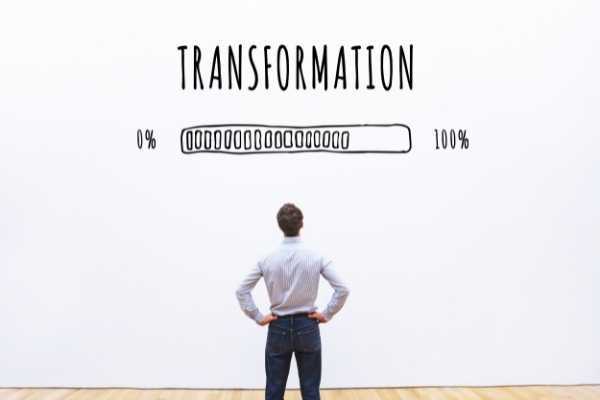
Retail outlets, restaurants and other fast-paced B2C enterprises share the common business trait of receiving many payments over the course of a day. Sometimes big amounts, sometimes small, but always a high transaction volume and always worth tracking.
Using a point of sale system, or POS, is the way to do this effectively. A POS is the platform by which your customer makes a payment for your product or service. Simply put, every time a customer makes a purchase at your store, they're completing a 'point of sale' transaction.
The POS serves as the central component for your business: it's the hub where everything - such as sales, inventory and customer management - merges.
Reliable POS systems are vital if you're a small business retailer. A good POS system does much more than process customer purchases, it will help boost turnover, save money, simplify staff duties and make you more efficient. It can even improve food hygiene by removing the necessity for staff to handle physical cash.
What to look for when you choose a POS system
Many tasks in a retail store or a restaurant can be tedious and resource intensive. With the right point of sale system, you have the ability to simplify your crucial daily business operations.
Today's POS systems do more than just offer flexibility when processing daily transactions, they improve your chances of success by providing tools to streamline processes.
Key features retailers and restaurants need:
- Sales reporting. Record and analyse sales data to help you make informed business decisions.
- Inventory management. Track your stock levels, to determine when and how often to reorder products.
- Customer management. Log purchases and keep in touch with customers through marketing tools.
- Employee reporting and management. Track employees' hours and sales while analysing who your top performers are.
Point of sale and Xero
Xero is a leading cloud-based accounting software provider for small- and medium-sized businesses and is used by more than a million users worldwide.
Xero has an open API, this means their 'Application Programming Interface' can be used by other software applications, such as point of sale systems, to integrate with it.
The result of this? A strong partner program by which you can integrate Xero with more than 500 specialised complementary applications such as POS systems, inventory management systems and more, to make your business more efficient.
Whether you're running a retail store, a restaurant or a café, Xero gives you many options to integrate your POS system and save time by reducing manual processes … and save you money by reducing risks.
How to choose a POS system with Xero integration
Choosing a point of sale system that will integrate with your Xero software is not quite as simple as you may think. The choice will depend on what information you want the POS system to send to Xero and how you want to use the data.
Consider which of the following factors relating to modern POS systems maybe relevant to your operations:
- The POS system must have the ability to map different sale types to different accounts in Xero's Chart of Account (CoA). If you are selling multiple products, then you probably have already identified types of products and services in your CoA. The integration must allow you to map different products to different accounts. A lot of older implementations just dump all sales into one account.
- Whether you need mapping of multiple current asset accounts to provide a view of 'current product value on hand' on your balance sheet.
- Mapping multiple Cost of Goods (Direct Cost) accounts, to see clearly how much profit you have made on sales of a particular product or service type. In most cases, you will be able to get that information directly from the POS. However, this particular integration is very useful when - in addition to direct cost - you can input wages and salary expenses of employees responsible for that particular product type. This requires a direct integration back into an accounting program. There are no POS systems that can do that by themselves.
- If you're operating out of multiple locations, you will likely want to see a separate P&L for each location. However, in a lot of cases, each outlet will have its own Xero file and books. In that case, you won't need a tracking categories integration.
- In a lot of cases, people have to update stock levels in their POS and then enter the purchase invoice in Xero. So, if your POS needs this capability, you need to check that the integration can manage the following multi-step process: generate-purchase-order to verify-received-goods to update-stock-levels to send-bill-to-Xero to update-current-asset-stock-on-hand.
- You may need the ability to introduce multiple payment methods and map them to accounts of your choice. If you do need this, your bookkeeper or accountant will, in turn, need to reconcile expected settlements from multiple sources, such as cash, EFTPOS, cheque, and direct debit.
- Payments and purchases on account need to be synchronised to Xero, so you know how much money your customers owe you or - if you allow customers to make purchases on account - whether they have available credit on their accounts to use.
- Collected loyalty points need to be converted to a dollar equivalent and synced to a Current Liability account in Xero, because they can be used in the future by your customers. If they expire, this needs to be reflected in the integration accordingly.
- Some POS systems do quotes and invoices that the customer pays later. Integration of these quotes to Xero is not really necessary in the majority of cases; however, sales invoices need to be treated differently and the system should raise a separate invoice in Xero automatically.
- Cash transactions going out of the till (e.g. float movements, till payment discrepancies, out-of-the-till cash payments to suppliers or any other cash out of the till) need to be synchronised to Xero for proper allocation and reconciliation.
- Gift vouchers' sold values must be synchronised to a liability account so you can clearly see the total amount on your balance sheet.
The next steps
If you are still with us after that long list, you can see why you must carefully consider which aspects of a POS-Xero integration you want and need in your business. This consideration process is the first step to finding and choosing a POS system that is going to provide you 'full' integration with Xero.
The good news is that after you have made it through this initial process, the actual work of integration of your POS system with your Xero account is fairly simple. However you approach it, it is an effective way to reduce manual administration tasks and minimise the risk of human error in data management.
Once the systems are fully integrated, the upside is enormous. The financial insights alone will help you make better business decisions and, therefore, help your business become more profitable.



Contact Us
Physical Address
Level 26, 44 Market Street
Sydney, NSW 2000
Australia
Find us on the map
Postal Address
Po Box Q284, Queen Victoria Building
NSW 1230, Australia
Ph.
02 9299 1555
Fax. 02 9299 1055
Email. mail@stubbsco.com.au
Liability limited by a scheme approved under Professional Standards Legislation.





